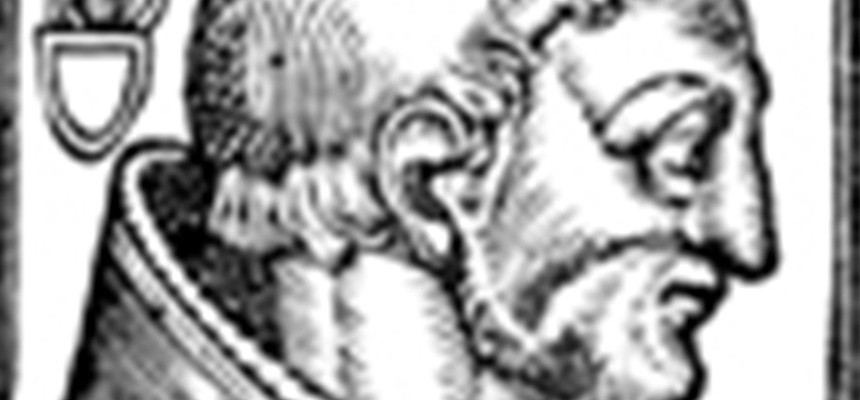
Pope Marinus I, mistakenly referred to as Pope Martinus II, had a short, but controversial papacy. The man, Marinus, must have been an intellectual of some repute, considering the responsibilities and assignments he was given.
Born in Gallese, in the province of Viterbo, north of Italy, his father, Palumbo, was a priest. Marinus was placed into the hands of the Church at the age of 12. He was ordained a subdeacon by Pope Leo IV (847-855). Given that subdeacons are usually young at the time of their ordination, one would assume that Marinus was probably born in the 820s-early 830s. He was consequently ordained a deacon by Pope Nicholas I (858-867).
Within a few years, Marinus was assigned to be a papal legate to Constantinople, by Pope Nicholas. The Patriarch of Constantinople, Photius, had defended Eastern tradition against the Roman Church and, it was said, had been elected uncanonically. The legates were to investigate in 861. By the time they arrived, Photius was well-ensconced and they accepted this as a fait accompli. That is not what Nicholas wanted. Two years later a local synod deposed Photius.
This led to a schism between Rome and Constantinople. In 869, it had gotten so bad that Marinus was sent to the 4th Council of Constantinople, by Pope Adrian. He represented the pope as Photius tried to excommunicate Adrian! Marinus was imprisoned for a time for following orders. Eventually Pope John VIII excommunicated Photius, leading to serious factions in Rome, itself.
During all of this, Marinus was given rewards for his work. He became bishop of Caere and became treasurer of the Church. He also served as legate for Pope John, again, when he was sent to Naples to warn Duke Athanasius to not trade with the Muslims who were moving into southern Italy. This was, obviously, not something the Muslims accepted
When Pope John died, Marinus was elected over the complaints of many, probably within days. There was a law, written in Canon 15 of the Council of Nicaea, that a bishop could not move to another see. He was already bishop of Caere. His election was to the See of Rome. And his election was challenged in both Eastern and Western Europe.
Once elected, in order to reduce the factions that were threatening to disrupt Rome, Pope Marinus abandoned some of the actions of Pope John. He restored the questionable Formosus, who, had been a trouble-maker for some time, as cardinal bishop of Portus. But he upheld John’s decision to not support Photius, anathematizing him.
On his own, the new pope granted the request of King Alfred of England to free the Anglo-Saxon students of the Schola Anglorum from paying tribute and taxes to the Vatican. Out of respect to the king, he sent him a piece of the True Cross.
In March, 883, the pope sent the pallium to Fulk, making him archbishop of Reims. This may have been partly at the request of King Alfred, who was supported by Fulk in his attempt to Christianize the Anglo-Saxons.
Possibly as a result of Pope John’s request to the duke of Naples to not trade with the Muslims, in 883, they attacked and burned Monte Cassino, the great Benedictine establishment. The abbey was abandoned until the mid 900s.
Pope Marinus did not reign very long, dying around May 15, 884. He was buried in the portico at old St. Peter’s Basilica.

Recent Comments